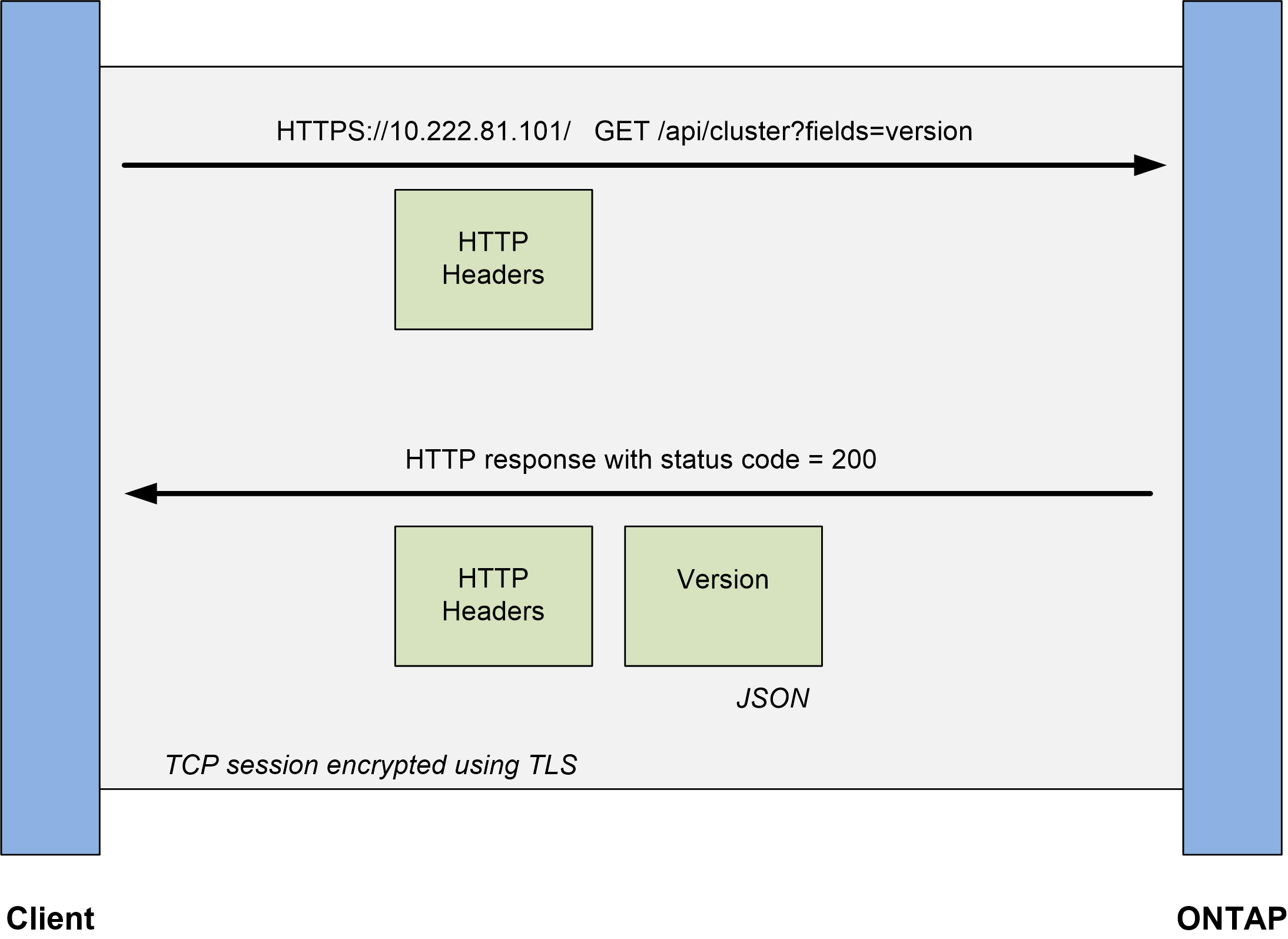REST web services foundation
 Suggest changes
Suggest changes


Representational State Transfer (REST) is a style for creating distributed web applications. When applied to the design of a web services API, it establishes a set of technologies for exposing server-based resources and managing their states. It uses mainstream protocols and standards to provide a flexible foundation for administering ONTAP clusters.

|
While REST establishes a common set of technologies and best practices, the details of each API can vary based on the choices made during development. You should be aware of the design characteristics of the ONTAP REST API before using it with a live deployment. |
Resources and state representation
Resources are the basic components of a web-based system. When creating a REST web services application, early design tasks include:
-
Identification of system or server-based resources
Every system uses and maintains resources. A resource can be a file, business transaction, process, or administrative entity. One of the first tasks in designing an application based on REST web services is to identify the resources.
-
Definition of resource states and associated state operations
Resources are always in one of a finite number of states. The states, as well as the associated operations used to affect the state changes, must be clearly defined.
URI endpoints
Every REST resource must be defined and made available using a well-defined addressing scheme. The endpoints where the resources are located and identified use a Uniform Resource Identifier (URI). The URI provides a general framework for creating a unique name for each resource in the network. The Uniform Resource Locator (URL) is a type of URI used with web services to identify and access resources. Resources are typically exposed in a hierarchical structure similar to a file directory.
HTTP messages
Hypertext Transfer Protocol (HTTP) is the protocol used by the web services client and server to exchange request and response messages about the resources. As part of designing a web services application, HTTP methods are mapped to the resources and corresponding state management actions. HTTP is stateless. Therefore, to associate a set of related requests and responses as part of one transaction, additional information must be included in the HTTP headers carried with the request and response data flows.
JSON formatting
Although information can be structured and transferred between a web services client and server in several ways, the most popular option is JavaScript Object Notation (JSON). JSON is an industry standard for representing simple data structures in plain text and is used to transfer state information describing the resources. The ONTAP REST API uses JSON to format the data carried in the body of each HTTP request and response.
Typical REST API transaction
Every API transaction consists of an HTTP request and the associated response. This illustration shows how to retrieve the version of the ONTAP software used by the cluster.

The request sent from the client to the server consists of the following:
-
GET verb
-
URL path for the cluster
-
Query parameter (fields)
-
Request headers, including authorization
The response sent from the server to the client consists of the following:
-
Status code 200
-
Response headers
-
Response body containing the cluster software version

